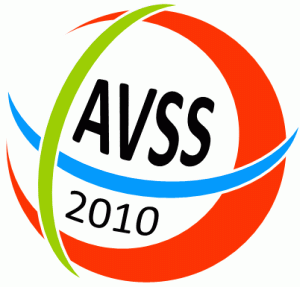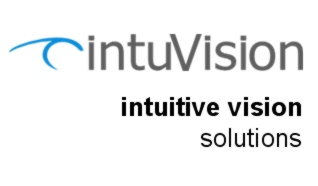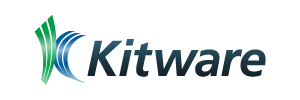Guarded Code Suggestions: Safe Edits, Tests, and Rollback Plans
When you're working on software, every change matters—especially when it comes to code safety. Guarded code suggestions give you a practical way to make edits with fewer risks. By mixing safe edits, strong testing habits, and solid rollback plans, you can catch potential issues before they impact users. But how do you ensure these safeguards aren’t just boxes you tick, but habits you build into your workflow?
The Importance of Guarded Code Suggestions
Guarded code suggestions play a crucial role in the software development process by offering real-time, context-aware recommendations that can aid in identifying and addressing potential bugs early in the coding phase.
This proactive approach contributes to the overall safety of code changes as they move through various stages of the software release process. By utilizing guarded code suggestions, developers are more likely to identify and rectify security vulnerabilities prior to deployment, thereby enhancing the security posture of the application.
Additionally, adhering to recognized best practices and conducting thorough testing can lead to a reduction in system risks, which ultimately contributes to improved performance and stability of the software.
Consistency in coding is another benefit of implementing guarded suggestions, as these tools help maintain uniform coding standards across the software system.
This uniformity can facilitate better monitoring of application performance over time. In the event of issues arising from a release, having established rollback plans and strategies allows development teams to efficiently revert changes.
This capability is essential in minimizing downtime and ensuring that software releases remain stable and secure. Overall, the integration of guarded code suggestions into the development workflow supports the creation of more reliable and secure software.
Strategies for Safe Code Edits
To ensure that code edits remain safe throughout the development lifecycle, it's essential to implement various strategies. Utilizing version control systems is a fundamental practice, as they allow developers to track changes and quickly revert to previous versions if issues arise. This capability is crucial for maintaining stability in the codebase.
Another strategy involves the use of feature toggles, which permit developers to enable or disable features without requiring a full deployment. This approach minimizes the risk associated with introducing new features, as it allows for controlled experimentation and testing in production environments.
Monitoring performance after deployment is also critical. This step helps identify any potential problems early and allows for immediate corrective actions.
Moreover, establishing a clear rollback plan is necessary. This plan should outline the procedures for reverting changes and specify the roles of team members involved in the process, which ensures a coordinated response if issues occur.
Testing the rollback in a mirrored environment is an integral part of the deployment strategy. This practice allows teams to identify any potential issues before they affect users and confirms that the rollback procedures will function as expected in case of a need for reversion.
Additionally, conducting code reviews can reinforce safe editing practices. These reviews provide a platform for collaboration and feedback, which can help catch errors and improve code quality.
Effective communication among all stakeholders is also vital, as it ensures that everyone is aligned on expectations and changes, facilitating a smoother development process.
Implementing Effective Testing Procedures
Ensuring that code changes don't introduce new issues requires a systematic approach to testing. Establishing testing environments that closely resemble production systems is crucial for validating the stability of the software prior to deployment. A comprehensive testing strategy includes unit tests, functional tests, integration tests, and stress tests, each serving a specific purpose in evaluating different aspects of the system.
In addition to these tests, employing both static and dynamic analysis can help identify potential vulnerabilities and inefficiencies in the code. Static analysis examines code without executing it, while dynamic analysis involves testing the program in a runtime environment.
Regular code reviews are also essential, as they facilitate early identification of defects, promote knowledge sharing among team members, and help establish best practices.
Maintaining a detailed testing checklist can aid in systematically verifying that all necessary tests are performed, minimizing the risk of oversight. It's also important to benchmark testing results against established performance indicators to assess the effectiveness of the changes made. Continuous monitoring of system health after deployment will ensure that any emerging issues are promptly addressed.
This methodical approach provides a foundation for effective rollback strategies and facilitates the deployment of changes with a higher level of reliability and confidence.
Utilizing Checkpoints and Feature Flags
By employing checkpoints and feature flags, developers can manage changes in a structured and efficient manner throughout the software development lifecycle.
Checkpoints serve as stable snapshots of the application, allowing teams to revert to a previous version quickly if testing uncovers any issues. This minimizes disruption and helps maintain the integrity of the application during the development process.
Feature flags are mechanisms that enable the toggling of specific functionalities within the software. This capability reduces deployment risks as it allows for controlled releases of new features and facilitates targeted testing or A/B experiments without impacting the entire user base.
By using feature flags, teams can better align updates with organizational objectives while maintaining a consistent user experience.
Additionally, having a robust rollback strategy in place is essential for mitigating potential problems that could arise during deployment.
However, it's important to manage feature flags carefully; regular maintenance to remove outdated or unnecessary flags is critical to avoid issues related to toggle debt. This practice ensures smoother code management and contributes to the overall stability of the application.
Developing Robust Rollback Plans
Despite advancements in modern deployment strategies that aim to mitigate risks, having a comprehensive rollback plan remains essential for addressing unforeseen issues quickly and effectively.
A well-structured rollback plan should include clearly documented procedures that outline specific scenarios that would trigger a rollback. Implementing automated monitoring tools that provide real-time health checks can help detect issues promptly, facilitating timely alerts for the team.
Establishing effective communication protocols is critical for ensuring that all team members can coordinate their actions efficiently. Regular training sessions should be scheduled to allow team members to practice and internalize the rollback procedures, fostering a culture of preparedness.
Furthermore, conducting audits every 90 days is advisable to assess the current rollback plan, incorporating lessons learned from previous rollback experiences to enhance the plan's effectiveness.
Minimizing Deployment Risks Through Controlled Releases
To minimize deployment risks, it's essential to implement controlled release strategies that govern how new code is introduced to users. Controlled releases, including Canary and Rolling deployments, allow for the testing of new features on a limited audience before full-scale rollout. This approach is beneficial for identifying potential issues and minimizing service disruptions.
Blue-Green deployments ensure a robust deployment process by maintaining two separate environments: one active (Blue) and one idle (Green). This setup facilitates immediate reversions to the previous version if needed, reducing downtime and operational risk.
Additionally, Feature Toggles provide a mechanism to enable or disable specific features without necessitating a complete redeployment, thereby streamlining the rollback process when issues occur.
The implementation of automated rollback systems further enhances the ability to mitigate the impact of failures. It's also advisable to conduct regular testing of the rollback plan to ensure its effectiveness, thereby reinforcing the overall deployment strategy.
This structured approach to release management supports continuous improvement and helps maintain a reliable user experience.
Ensuring System Stability Post-Deployment
Once code is deployed, ensuring system stability requires careful consideration beyond just successful implementation.
It's crucial to have a comprehensive rollback plan prepared to address any deployment failures and swiftly restore service. Implementing feature toggles can facilitate the gradual activation of new functionalities, enabling teams to isolate and manage potential issues without significantly impacting the user experience.
Continuous monitoring of system performance—such as tracking API response times and error rates—is essential for early detection of anomalies.
Furthermore, conducting post-deployment analysis allows for a thorough review of system behavior, which is vital for adjusting safeguards and documenting lessons learned for future releases.
Adopting these practices contributes to a structured approach to maintaining system stability, minimizing risks, and ensuring effective recovery and informed adjustments following each deployment.
Building a Culture of Continuous Improvement in Code Safety
Fostering a culture that emphasizes safety in the development process can lead to incremental improvements in code quality. One effective strategy is to implement feature flags, which allow for controlled rollouts of new features and facilitate quick rollback plans in the event of issues in production. This approach enables teams to identify and mitigate potential problems more effectively.
Automated testing is another critical component in maintaining code safety. By integrating automated tests into the development workflow, teams can detect bugs at an early stage, thereby ensuring that a high standard of code quality is upheld.
In addition to testing, regular code reviews should be an integral part of the development process. Code reviews provide an opportunity for team members to identify and address potential issues before the code is deployed, contributing to overall code robustness.
Furthermore, it's important to adopt a systematic approach to post-release incident analysis. By analyzing incidents after deployment, teams can derive insights that contribute to continuous improvement and prevent similar issues in the future.
Lastly, providing ongoing training and conducting practice rollback scenarios can prepare team members to proactively address challenges that may arise during the development process. This comprehensive approach to code safety not only enhances the quality of the software but also fosters a culture of accountability and improvement within development teams.
Conclusion
By embracing guarded code suggestions, you’re putting your team in a strong position to catch issues early and respond quickly when necessary. Safe edits, thorough testing, checkpoints, and feature flags let you manage releases confidently and recover fast if something goes wrong. When you pair these technical strategies with a culture of continuous improvement, you’ll boost your code’s quality and system stability. Ultimately, you’re making your software safer and your users’ experience much more reliable.








